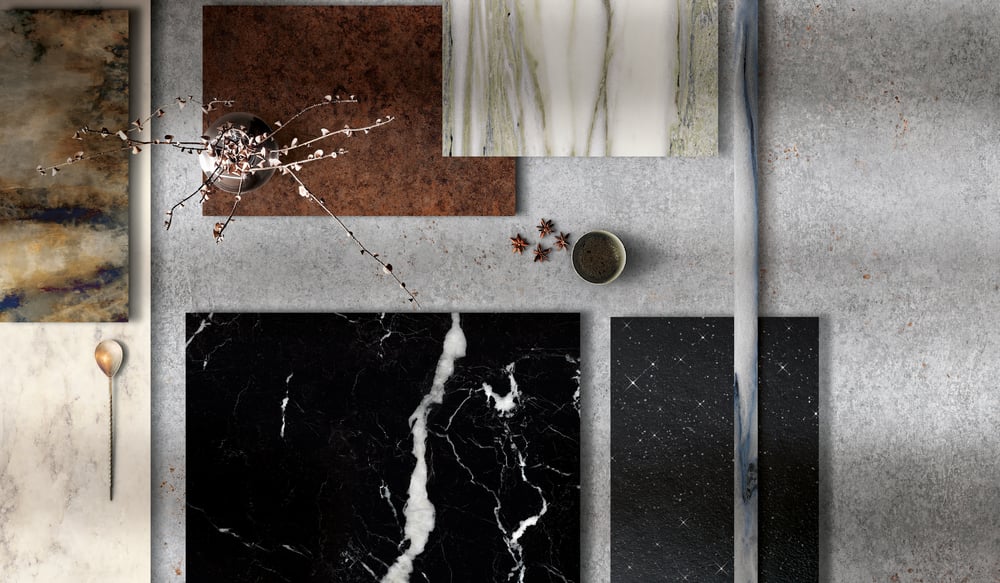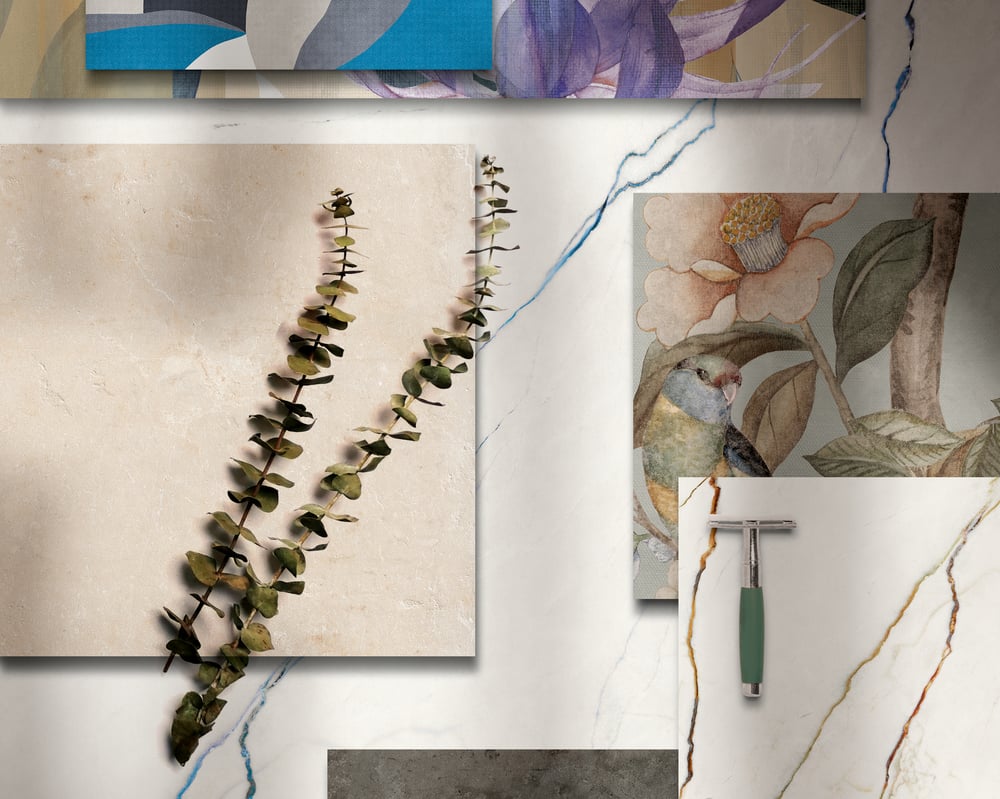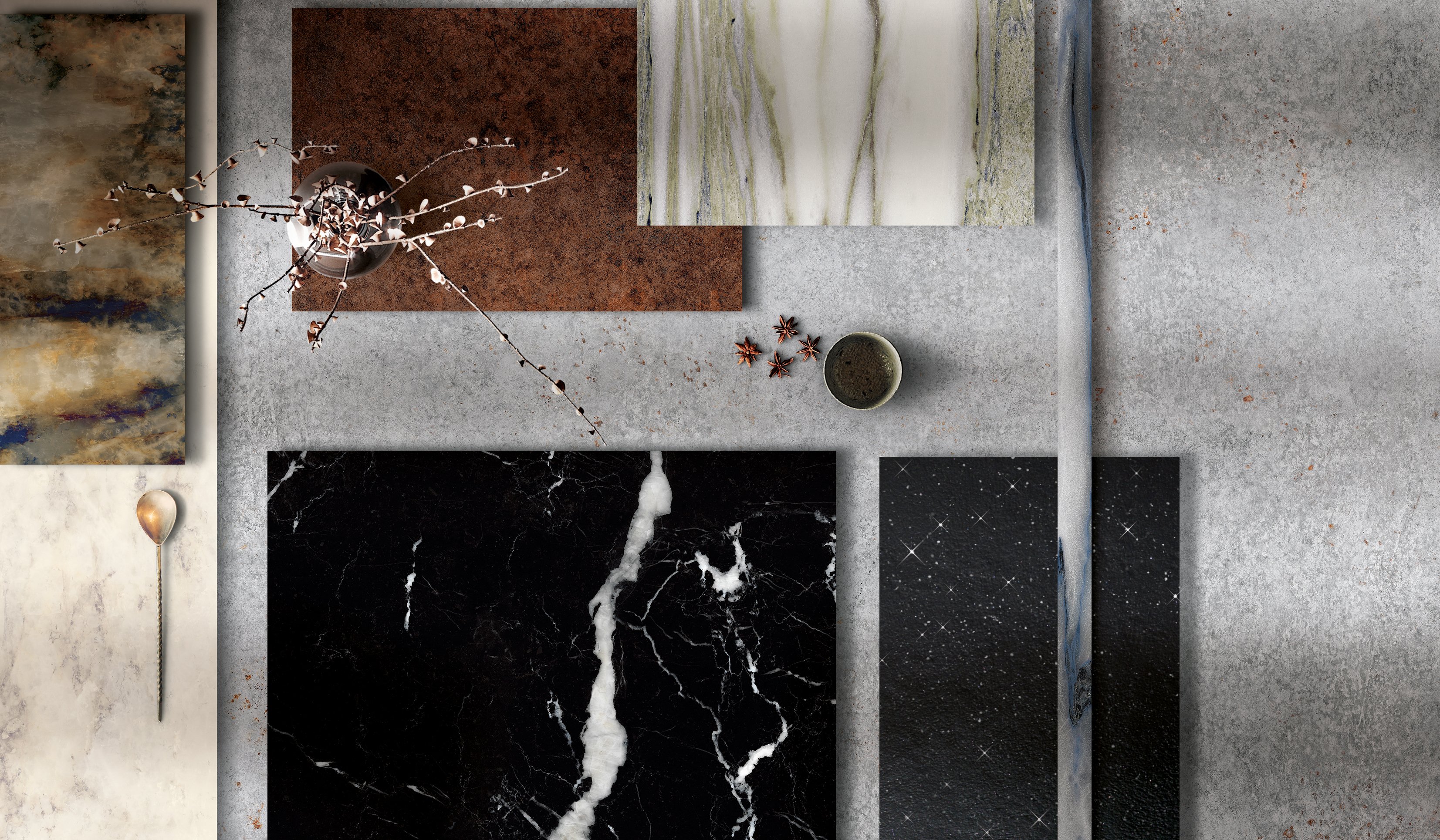The thousand colours of porcelain stoneware: here's how to choose the right one for your home
One of the peculiarities of porcelain stoneware tile collections is the possibility of having an extremely wide colour palette: unlike natural materials, in fact, porcelain stoneware can be manufactured in a virtually infinite range of colours, and there is no limit to the amount of combinations and effects that can be created.
How do you orient yourself among the many options available and choose the most suitable colour for the tiles and claddings in your home? The answer to this question depends, of course, on personal tastes and preferences, but there are some helpful elements that can help you navigate through the many opportunities available. Let's explore some.
Tile colour and furnishing style: in search of harmony
The first thing to emphasise when talking about the choice of colour of the tiles, is that all the rules that we can try to explain are always subject to corrections and variations dictated by the personal taste of the people who live in the house. Porcelain stoneware, in this sense, is one of the most versatile and performing materials, because it is able to adapt to any type of style: those who love bright, pop and contrasting colours can find porcelain stoneware tiles that can excellently satisfy their desire for saturated and bright colours; those looking for solutions that best reproduce natural colours and textures can choose from endless combinations of marble or stone-effect porcelain stoneware; those who prefer industrial style can focus on concrete-effect collections that feature metallic finishes, and so on.
In any case, what must always be borne in mind is that tiles and coatings have the ability to give character the appearance of a house: it is important to choose them having in mind, in broad outline, what will be the next furniture choices, possibly evaluating together with a professional the various options available on the market, to make decisions that you will not regret later. This does not mean, of course, that the tiles constitute a definitive constraint that will prevent, in the future, to make changes: everything can be revisited, within a clear and defined stylistic frame, which allows to obtain a harmonious result.

Primary Colours and Secondary Colours
To consciously choose the colour of the tiles, it is good to keep in mind some essential basic principles to create effective and consistent combinations.
First of all, it is worth remembering that each room must be furnished with a limited number of basic colours, so that each colour is enhanced by the others and does not generate a chaotic effect. According to a widespread theory, the base colours should be at most three, distributed according to an approximate proportion of 60%, 30% and 10%. This means that inside the room there must be a prevailing tint (primary colour) accompanied by two other tints (respectively secondary colour and accent colour, the least present of the three) that can be chosen by playing on continuity or contrast.
Starting from this principle, it is clear that the colour of the tiles and walls will be – in general – the primary colour of the environment. To brighten up the whole, you can then choose to paint a wall (or cover it with porcelain stoneware slabs) using the secondary colour, possibly also inserting the accent colour, which can be in contrast with the previous ones, to focus on some very specific details.
The choice of the primary colour of the tiles can be influenced, in addition to personal taste and the style of the house, also by elements such as the size of the rooms, the presence of natural light sources, exposure to the sun, how the rooms are used and so on. In this sense – but, again, it is not a rule – it is normally advisable to use soft and delicate colours for smaller rooms, perhaps opting for cool colours and avoiding juxtaposing strong colours that would make the environment appear even smaller. On the contrary, in a large room furnished perhaps with furniture with clean lines and light colours, it is possible to dare with more peculiar colour combinations for the floor and walls, in order to best enhance the furniture and help define the character of the space.
Colours and fashion: what are the trendy shades
Finally, it cannot be emphasised enough that when we talk about colours we move in a field strongly subject to fashion and trends that change over time, and that after years they allow us to determine with reasonable approximation when a certain restyling or restructuring intervention has been carried out.
It is important to know these trends and consider them with a careful eye, to establish which are the aspects that we like and convince us and which, instead, push us to go against the current. For example, colours and textures that reproduce natural materials (such as marble or stone), are becoming more and more widestpead, also accompanied by the tendency to use bright and contrasting colours – limited to some rooms of the house or a wall of a room – to make the whole more original.

These trends do not, of course, constitute rules, and can be revisited by each of us according to our own preferences. Whatever style you want to recreate, however, porcelain stoneware is able to provide effective and highly effective solutions, capable of satisfying every taste.
